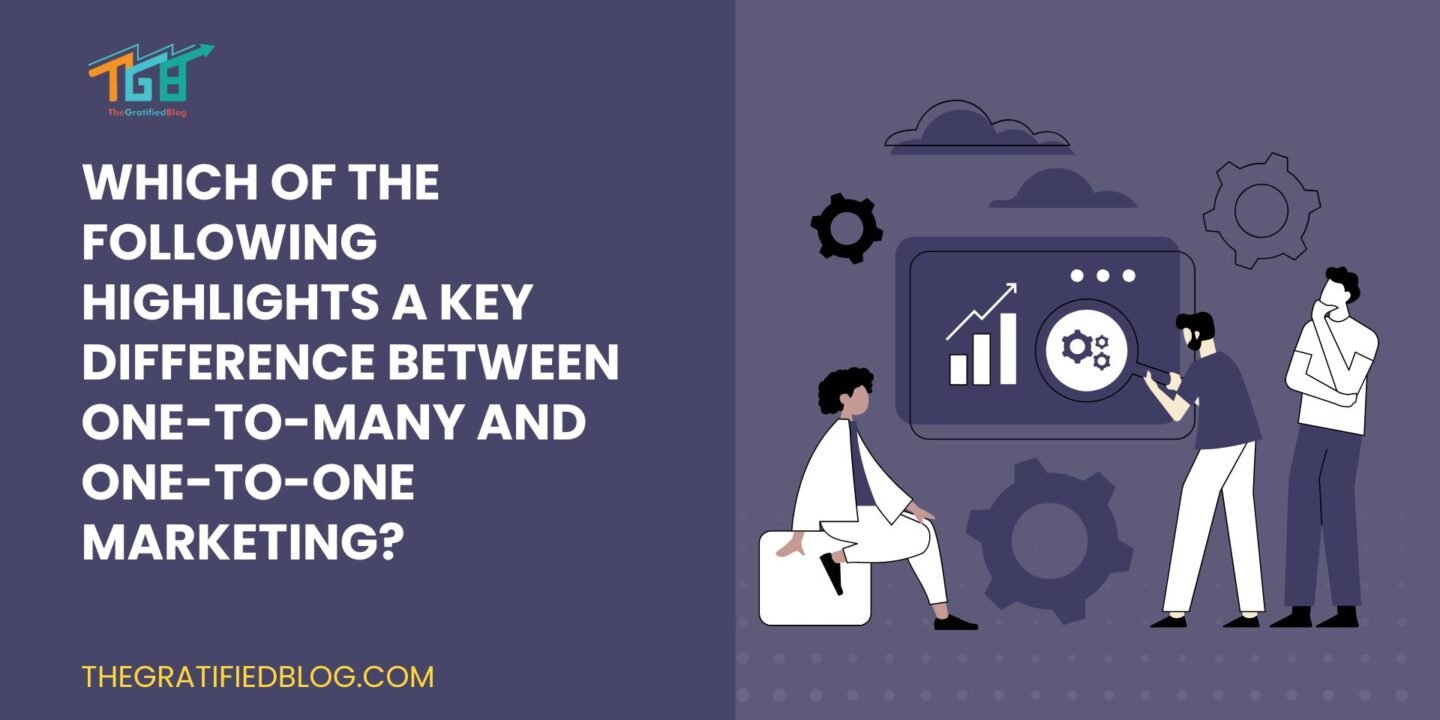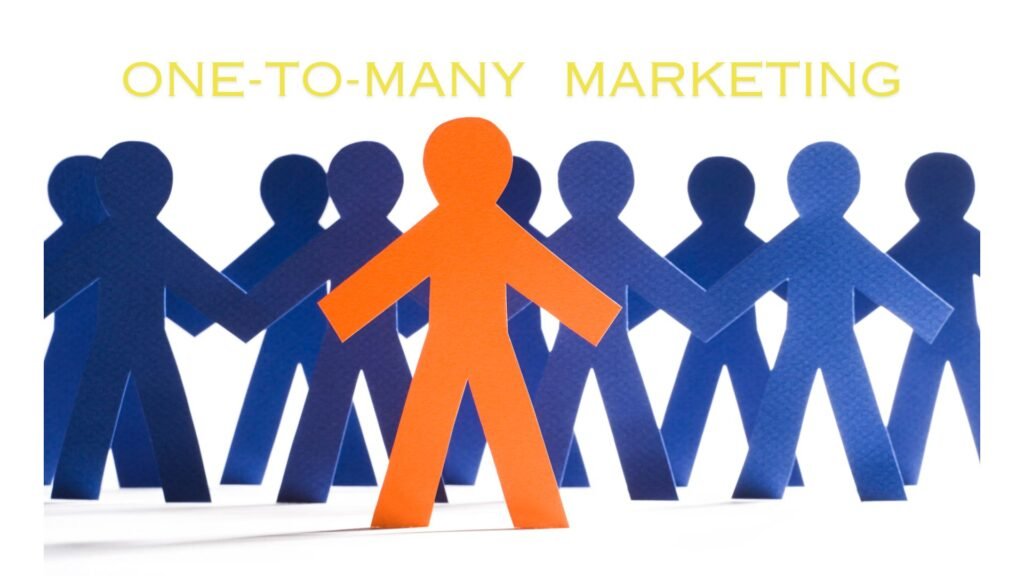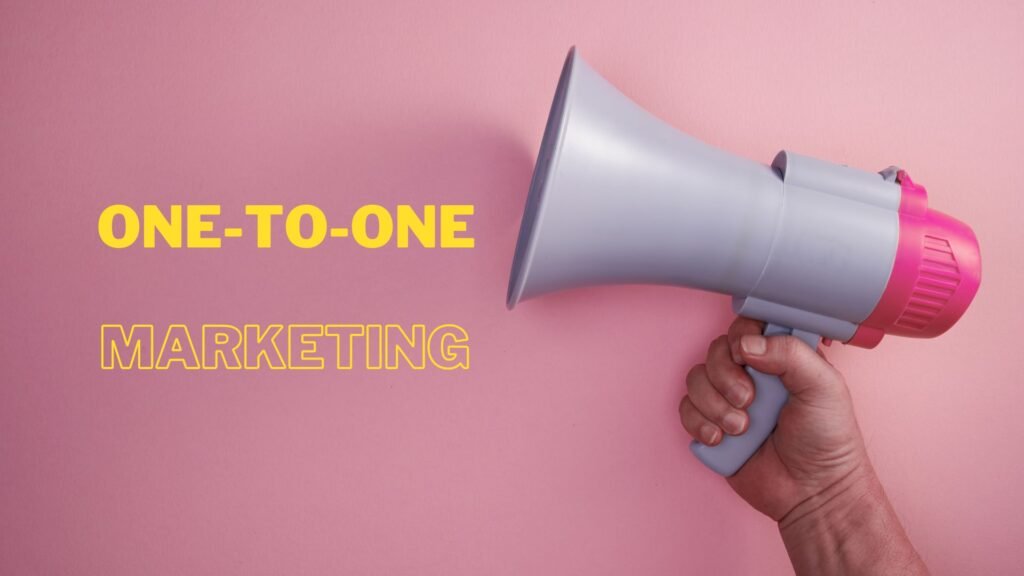
In today’s digital age, marketing strategies have evolved significantly to cater to consumers’ diverse needs and preferences. Among the various approaches, one-to-many and one-to-one marketing are prominent methodologies businesses employ to engage with their target audiences. While both aim to drive sales and build brand loyalty, they operate on fundamentally different principles. This blog, “Which of the following highlights a key difference between one-to-many and one-to-one marketing?” explores the critical disparities between the two concepts, highlighting their advantages and limitations.
Understanding One-To-Many Marketing

One-to-many marketing, often called mass marketing, is a traditional approach in which a single message is broadcast to a large audience through mass media channels such as television, radio, newspapers, and billboards. This strategy aims to reach as many potential customers as possible without considering individual preferences or characteristics.
Marketers rely on broad demographic data to segment their audience and tailor their message accordingly. For example, a fast-food chain might advertise a new burger deal during prime-time television to attract a broad audience.
Key Characteristics of One-To-Many Marketing:
- Mass Appeal: One-to-many marketing strategies aim to reach a broad audience segment, irrespective of individual differences in preferences, behaviours, or demographics. The focus is on casting a wide net to maximise exposure and visibility.
- Economies of Scale: Through mass media channels such as television, radio, newspapers, and billboards, marketers can achieve cost efficiencies in reaching many consumers. Bulk advertising space or airtime purchases enable lower costs per exposure compared to more targeted approaches.
- Limited Personalization: Messages in one-to-many marketing are typically generalised to appeal to a broad audience. While efforts may be made to tailor messages based on broad demographic data, personalisation is limited compared to one-to-one marketing.
- Brand Awareness: One-to-many marketing effectively creates broad brand awareness and visibility in the market. Through repeated exposure to mass media campaigns, consumers become familiar with the brand and its offerings, which can influence their purchasing decisions over time.
- Broadcast Communication: Communication in one-to-many marketing is one-way, with the brand broadcasting messages to the audience through mass media channels. Feedback and interaction from individual consumers are limited, resulting in less direct engagement than personalised approaches.
- Mass Production: Products or services promoted through one-to-many marketing campaigns are often designed for mass consumption. The focus is on creating standardised offerings catering to individual needs or preferences.
- Reach and Frequency: One-to-many marketing aims to maximise the reach (the number of people exposed to the message) and the frequency (the number of times each encounters the message) to reinforce brand recall and influence consumer behaviour.
- Traditional Media Channels: Mass media channels such as television, radio, print publications, and outdoor advertising are commonly utilised in one-to-many marketing campaigns due to their broad reach and ability to target diverse audience segments.
- Limited Feedback Loop: Feedback mechanisms in one-to-many marketing are often indirect and delayed. Marketers rely on market research, surveys, and sales data to gauge the effectiveness of campaigns rather than receiving immediate feedback from individual consumers.
Exploring One-To-One Marketing

One-to-one marketing, also known as personalized or individualized marketing, is a marketing strategy that focuses on treating each customer as unique and tailoring marketing efforts to meet their specific needs, preferences, and behaviours. Rather than using a mass marketing approach where the same message is delivered to a large audience, one-to-one marketing aims to create personalized experiences for each customer, increasing engagement, satisfaction, and loyalty.
Key Characteristics of One-To-One Marketing:
Personalisation
One-to-one marketing focuses on delivering highly personalised experiences to individual customers. This involves tailoring marketing messages, product recommendations, and interactions based on each customer’s unique preferences, behaviours, and past interactions with the brand.
Data-Driven Approach
One-to-one marketing relies heavily on data analytics and customer insights to understand individual customer profiles and behaviours. Enterprises can craft precise and pertinent marketing initiatives by harnessing data from diverse channels, including CRM systems, website engagements, purchase records, and demographic data.
Customer Relationship Building
One-to-one marketing emphasises building and nurturing individual customer relationships. Businesses can foster trust and loyalty by understanding their needs, addressing their concerns, and providing personalised solutions, leading to long-term customer retention and advocacy.
Omni-Channel Engagement
One-to-one marketing employs an omnichannel approach to engage with customers across multiple touchpoints. The importance of social media marketing, email, mobile apps, or in-person interactions lies in its ability to facilitate direct interaction with customers, gather insights into their preferences and behaviours, and build relationships in real-time, enhancing one-to-one marketing strategies’ effectiveness.
Continuous Optimization
One-to-one marketing involves continuously monitoring and optimising marketing efforts based on real-time data and customer feedback. By analysing campaign performance, adjusting strategies, and experimenting with different tactics, businesses can enhance the effectiveness of their one-to-one marketing initiatives over time.
Lifetime Value Focus
One-to-one marketing prioritises maximising the lifetime value of each customer rather than focusing solely on short-term transactions. By delivering personalised experiences that exceed customer expectations, businesses can increase lifetime value and drive sustainable growth.
Dynamic Segmentation
One-to-one marketing goes beyond traditional segmentation methods by dynamically segmenting customers based on real-time behaviours and interactions. This allows businesses to deliver hyper-targeted messages and offers that resonate with specific customer segments at the right time and place.
Which Of The Following Highlights A Key Difference Between One-To-Many And One-To-One Marketing?

Now that we have outlined the basic concepts of one-to-many and one-to-one marketing. Let’s further explore the fundamental distinctions between the two methodologies:
Targeting Scope
- One-to-many marketing targets a broad audience segment.
- One-to-one marketing focuses on individual customers.
Level Of Personalization
- One-to-many marketing offers limited personalisation, with messages tailored to broad audience segments.
- One-to-one marketing delivers highly personalised experiences, addressing individual needs and preferences.
Communication Channels
- One-to-many marketing relies on mass media channels such as television, radio, and print advertising.
- One-to-one marketing utilises various communication channels, including email, social media, and personalised websites.
Relationship Building
- One-to-many marketing primarily focuses on building brand awareness and reaching a large audience.
- One-to-one marketing prioritises building solid and long-term relationships with individual customers to drive loyalty and repeat business.
Data Utilization
- One-to-many marketing relies on broad demographic data for segmentation and targeting.
- One-to-one marketing utilises extensive data analysis and customer insights to tailor marketing efforts to individual preferences and behaviours.
Measurement Metrics
- One-to-many marketing metrics often include reach, impressions, and brand awareness surveys.
- One-to-one marketing metrics focus on customer interactions, such as conversion rates, lifetime value, and retention rates.
Cost And Resource Allocation
- One-to-many marketing requires significant investment in mass media advertising and market research.
- One-to-one marketing involves investment in data analytics, CRM systems, and personalised marketing tools.
Customer Retention
- One-to-many marketing may need help to retain customers long-term due to its impersonal nature.
- One-to-one marketing aims to build strong customer connections, increase retention rates and enhance customer lifetime worth.
Flexibility
- One-to-many marketing campaigns could be more flexible and may require a significant lead time to adjust messaging or targeting.
- One-to-one marketing campaigns can be more agile and responsive, allowing for rapid adjustments based on real-time data and customer feedback.
Brand Loyalty
- One-to-many marketing may contribute to brand awareness but may not necessarily foster deep brand loyalty.
- One-to-one marketing focuses on building personalised customer connections, leading to stronger brand loyalty and advocacy.
Customer Satisfaction
- One-to-many marketing may result in varying levels of customer satisfaction due to its generic messaging.
- One-to-one marketing aims to meet individual customer needs and preferences, leading to higher customer satisfaction.
Customer Acquisition Cost
- One-to-many marketing can lower customer acquisition costs per individual reached due to economies of scale.
- One-to-one marketing may have a higher customer acquisition cost per individual reached due to the resources required for personalisation.
Customer Feedback Incorporation
- One-to-many marketing may incorporate general feedback from surveys or focus groups into future campaigns.
- One-to-one marketing can incorporate individual customer feedback into personalised interactions and offers in real time.
Brand Image
- One-to-many marketing shapes the overall brand image through mass exposure and messaging.
- One-to-one marketing can enhance the brand image by demonstrating a commitment to personalised customer experiences and attentive service.
Campaign Success Metrics
- One-to-many marketing success is often measured by overall campaign reach, brand awareness, and sales volume.
- Individual customer engagement, conversion rates, and customer satisfaction scores measure one-to-one marketing success.
Response Rates
- One-to-many marketing campaigns typically have lower response rates due to their generalised nature.
- One-to-one marketing campaigns tend to have higher response rates as they are tailored to individual preferences and needs.
Long-Term Strategy
- One-to-many marketing may be more suitable for short-term promotional campaigns or mass product launches.
- One-to-one marketing is often part of a long-term strategy focused on building lasting relationships and maximising customer lifetime value.
Benefits Of One-To-Many Marketing
One-to-many marketing, focusing on mass communication, offers several benefits for businesses. Firstly, it allows for a wider reach, enabling companies to connect with a larger audience. Businesses can effectively promote their products/services to a specific market segment by targeting individuals with similar characteristics or interests.
Additionally, one-to-many marketing is cost-effective. By reaching many people through a single communication channel, businesses can maximise their marketing efforts while minimising costs. This is particularly advantageous for small businesses or those with limited marketing budgets.
Furthermore, one-to-many marketing enables businesses to create brand awareness on a broader scale. By consistently communicating with a large audience, companies can position themselves as industry leaders and increase their brand visibility.
One-to-many marketing offers the benefits of broader reach, cost-effectiveness, and the ability to create brand awareness. It is a valuable strategy for businesses looking to connect with a larger audience and increase brand recognition.
Benefits Of One-To-One Marketing
On the other hand, one-to-one marketing focuses on personalised communication and offers businesses its benefits. One key advantage is the ability to tailor marketing messages to individual customers. By collecting and analysing customer data, companies can create personalised experiences, recommendations, and offers that resonate with each customer’s unique preferences and needs.
Another benefit of one-to-one marketing is the potential for higher customer satisfaction and loyalty. By understanding each customer’s specific needs and preferences, businesses can deliver highly relevant and timely communications, leading to a more positive customer experience. This personalised approach can build stronger customer relationships and increase their likelihood of repeat purchases and referrals.
Furthermore, one-to-one marketing allows businesses to gather valuable insights and data on individual customers. Businesses can monitor customer behaviour and preferences to make more informed decisions and refine their marketing strategies to better meet their target audience’s needs.
One-to-one marketing offers the advantages of personalised communication, increased customer satisfaction and loyalty, and valuable customer insights. It is a powerful marketing strategy and plan for businesses seeking to cultivate robust customer connections and propel sustained prosperity.
FAQs
Q1. What is one-to-many marketing?
Ans. One-to-many marketing involves reaching out to a broad audience with a single message or campaign. It typically utilizes mass media channels such as television, radio, print, and online advertising.
Q2. What is one-to-one marketing?
Ans. One-to-one marketing is a personalized approach in which businesses tailor communication and offers to individual customers based on their preferences, behaviours, and purchase history. It focuses on building personalized relationships with each customer.
Q3. How do they differ in targeting?
Ans. One-to-many marketing targets a broad audience with a generic message, while one-to-one marketing targets individual customers with personalized communication.
Q4. What communication channels are used in each approach?
Ans. One-to-many marketing relies on mass media channels like advertisements, whereas one-to-one marketing utilizes direct communication channels such as personalized emails, phone calls, or targeted digital ads.
Q5. How are messages customized in each approach?
Ans. In one-to-many marketing, messages are often generic and designed to appeal to a broad audience. In contrast, one-to-one marketing involves customizing messages and offers based on individual customer data and preferences.
Conclusion
In conclusion, the choice between one-to-many and one-to-one marketing depends on various factors, including the nature of the product or service, target audience characteristics, and marketing budget. While one-to-many marketing offers broad reach and cost efficiencies, one-to-one marketing enables deeper customer engagement and personalised experiences, enhancing loyalty and lifetime value. Ultimately, successful marketing strategies often integrate elements of both approaches to achieve a balanced and effective marketing mix in today’s dynamic business environment.








No Comments